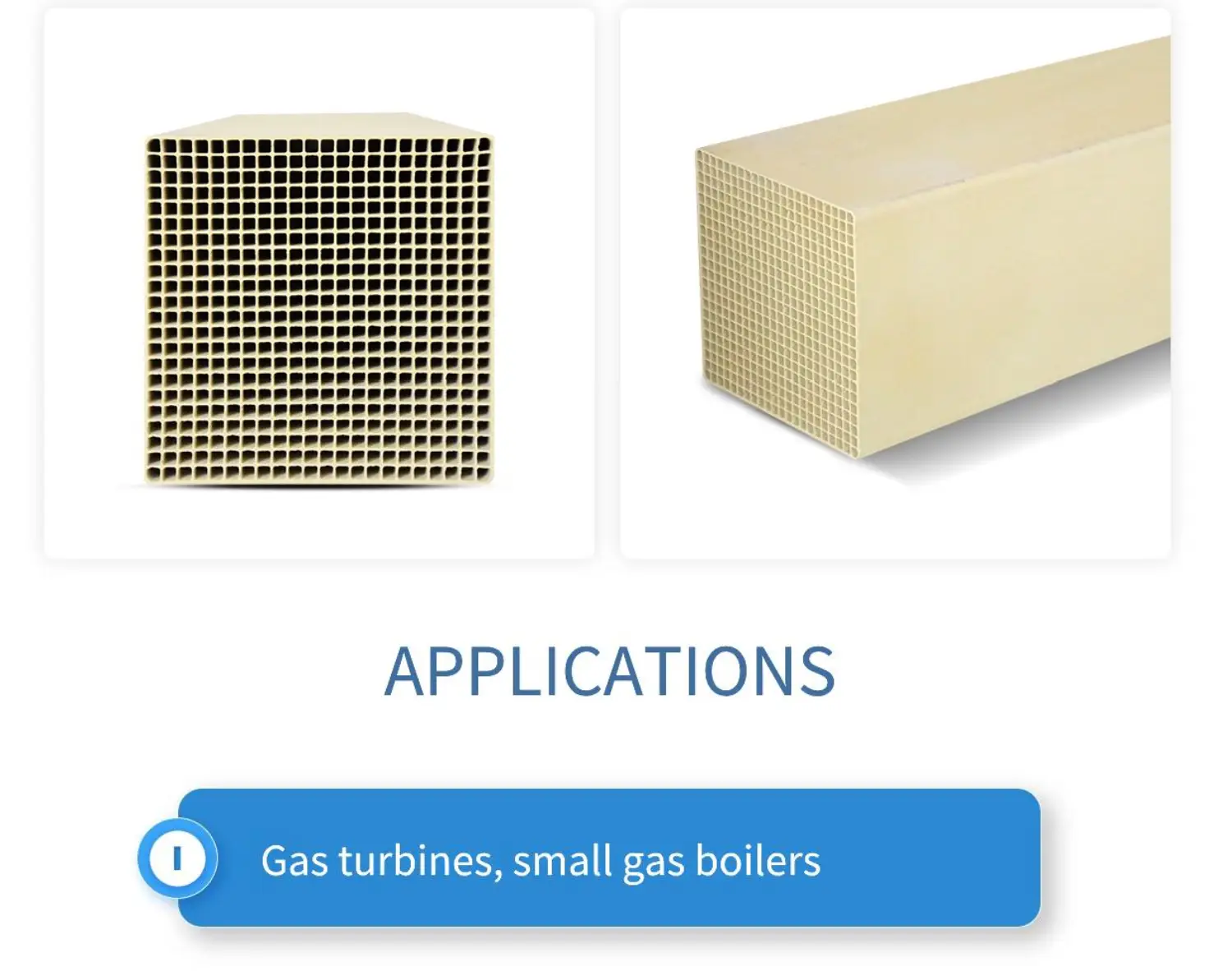Ultra-high Temperature SCR Denitrification Catalyst–For Space-Limited Generator Furnaces
Why Choose Yuanchen Catalysts?

1. Proven Performance:
Our catalysts are rigorously tested and validated, ensuring consistent NOx reduction performance in power plant applications.
2. Tailored Solutions:
We understand the complexities of power plant operations. Our catalysts are meticulously designed to address these challenges and deliver optimized results.
3. Environmental Stewardship:
By reducing NOx emissions, our catalysts play a vital role in reducing air pollution and promoting cleaner air quality around power plants.
4. Regulatory Compliance:
Our catalysts are designed to meet or exceed stringent emissions standards, enabling power plants to meet regulatory requirements.







Production line on Yuanchen Factory workshop:
DeNOx Honeycomb Catalyst Working Principle:
The Power Plant Use DeNOx Catalyst is primarily utilized in power plants with Selective Catalytic Reduction (SCR) systems. These systems are crucial components in power plants’ efforts to reduce nitrogen oxide (NOx) emissions, contributing to cleaner air and environmental responsibility. Here’s how the process works:
Power Plant Boiler:
In a power plant, boilers generate steam by burning fossil fuels, typically coal, natural gas, or oil. This steam is used to turn turbines, generating electricity. However, this combustion process releases pollutants, including NOx.
Flue Gas Treatment:
After combustion, the flue gases produced in the power plant boiler contain pollutants like NOx. These gases are directed through a flue gas treatment system before being released into the atmosphere.
Selective Catalytic Reduction (SCR) System:
The SCR system, equipped with the Power Plant Use DeNOx Catalyst, is a critical part of the flue gas treatment process. The catalyst facilitates a chemical reaction that converts NOx gases into harmless nitrogen (N2) and water vapor (H2O).
Catalytic Reaction:
Within the SCR system, the DeNOx Catalyst promotes the reduction of NOx emissions. Ammonia (NH3) or urea is introduced into the flue gases upstream of the catalyst. In the presence of the catalyst, NOx reacts with ammonia to form nitrogen and water vapor.
Emission Reduction:
Through the SCR process, a significant portion of the NOx emissions is transformed into harmless components. This helps power plants adhere to emissions regulations and enhance air quality.
Main Specifications of Honeycomb DeNOx Catalyst:
| Hole Numbers (PCS) |
Cross Section (mm) |
Hole Diameter. (mm) |
Wall Thickness (mm) |
Catalyst Pitch (mm) |
Open Porosity (%) |
Specific Surface Area (㎡/m³) |
Application |
| 15 × 15 |
150 × 150 |
8.45 |
1.35 |
9.80 |
71.40 |
338 |
Coal fired unit, high smoke dust |
| 16 × 16 |
150 × 150 |
8.00 |
1.20 |
9.20 |
72.82 |
383 |
| 18 × 18 |
150 × 150 |
7.10 |
1.10 |
8.20 |
72.60 |
409 |
Coal fired unit, medium dust |
| 20 × 20 |
150 × 150 |
6.40 |
1.00 |
7.40 |
72.82 |
469 |
| 21 × 21 |
150 × 150 |
6.10 |
0.95 |
7.05 |
72.93 |
478 |
Coal fired unit, low smoke dust |
| 22 × 22 |
150 × 150 |
5.80 |
0.90 |
6.70 |
72.36 |
499 |
| 25 × 25 |
150 × 150 |
5.00 |
0.90 |
5.90 |
69.44 |
577 |
Coal fired unit, very low dust |
| 30 × 30 |
150 × 150 |
4.10 |
0.80 |
4.90 |
67.24 |
693 |
Oil fired unit, very low dust |
| 35 × 35 |
150 × 150 |
3.65 |
0.55 |
4.20 |
72.53 |
795 |
| 40 × 40 |
150 × 150 |
3.20 |
0.50 |
3.70 |
72.82 |
910 |
Natural gas fired unit |
| 45 × 45 |
150 × 150 |
2.78 |
0.50 |
3.28 |
69.56 |
1000 |
| 55 × 55 |
150 × 150 |
2.20 |
0.50 |
2.70 |
65.07 |
1275 |
| Single Catalyst Size: 150 × 150 × (length 300~1350) mm. |
According to the customer’s requirements, we can produce different pitch and formulations of honeycomb SCR de NOx catalyst.